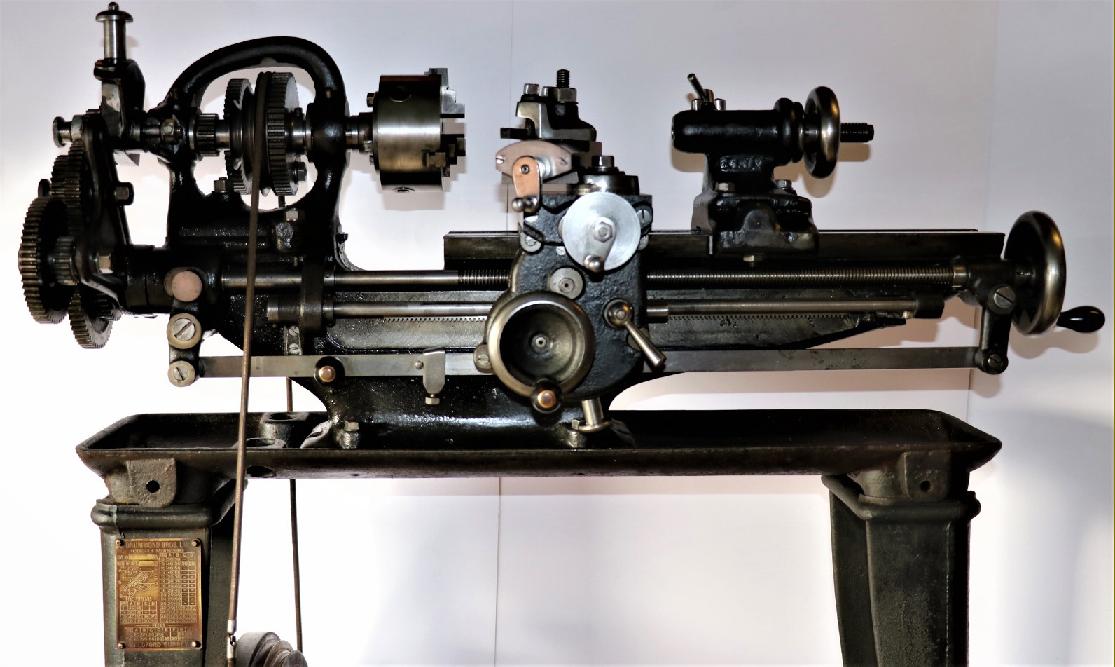

- #DRUMMOND LATHE SERIAL NUMBERS#
- #DRUMMOND LATHE MANUALS#
- #DRUMMOND LATHE ARCHIVE#
- #DRUMMOND LATHE SERIES#
In sacrificing some rigidity in favour of stylistic adornment the lathe followed late 19th century practice (note the shape of the bed and the graceful sweep of the headstock casting) but the design was sound and the features introduced during the first few years of production - a compound slide rest, adjustable headstock bearings, dog clutch on the leadscrew, backgear, set-over tailstock and swing headstock - were guaranteed to appeal to the market. However, the maker's contemporary catalogue description, " 31/2-inch Centre Back Geared, Self-acting Sliding, Boring, and Screwcutting Lathe " whilst accurate, is a little long for handy use - so for the purpose of easy reference to the very first flat-bed lathes we might call them "Mk. Although the early flat-bed lathes are often referred to as the "B Type" strictly speaking that designation did not apply until the appearance of a much-modified lathe in 1912 - and after the introduction of Round Bed in 1908, a lathe Drummond branded the "A Type". This lathe (including a rare 20-inch version, below) was, in its various guises, to continue in production for almost half a century with the final version, the " M-Type" (introduced in 1921) being eventually built by Myford from 1943 onwards with the last constructed from spares as late as 1951/2. However, although Drummond always had a strong presence in the industrial market and expanded to supply many complex and ordinary machine tools for the motor and other trades (including a now-rare small radial-arm drill), they were to become better known amongst the general public for their smaller machines starting, in 1902 with a flat-bed 3.5" x 16" model. From these humble beginnings the company grew to become one of the largest employers in the area and, maintaining their independence until after the Second World War, became one of the best-known English machine-tool companies. Using just a couple of lathes, a small planing machine and a drill - all powered from an oil engine - the workshop began by turning out two types of machine: a well-engineered backgeared and screwcutting lathe in 4 to 5-inch centre heights and a simple but rugged hand shaper. After an initial partnership agreement, in 1902 a private limited company was formed with £5000 of capital, in which form it was to survive until going public in 1948. Having made, in 1898, their first one-off lathe, by 1900 the Drummond Brothers, Arthur and Frank, were operating an engineering company from the outbuilding of a farmhouse some two-and-half miles from the centre of Guildford. Walram Lathe Attachment Testing a Drummond Latheĭrummond 5-inch Double-height Bed Photo Essay

#DRUMMOND LATHE SERIAL NUMBERS#
Serial Numbers Early Drummond Lathe Still in Useĭrummond Radial-arm Drill Geared-head Drummond Rare 4" Drummond Flat Bed Drummond Little Goliath
#DRUMMOND LATHE SERIES#
The First Drummond Lathe First Series Production Drummond Larger Drummond Lathes Drummond Lathe Accessories M-Type Countershafts Lathe Headstock Comparisonĭrummond 3.5-inch Parts Pictures Round Bed Drummond Shapers and other machine tools is availableġ902-1912 3.5" Small Lathes 1912-1921 3.5" Small Lathesġ921- 1924 3.5" Small Lathes 1925-1950s M-TypeĪdmiralty Power Cross Feed Lathe M-Type Photo Essay
#DRUMMOND LATHE MANUALS#
Machine Tool Manuals Machine Tool Catalogues Beltsī-Type, M-Type ( Myford M-Type ), Large Lathes & Drills
#DRUMMOND LATHE ARCHIVE#
Email: t Machine Tool Archive Machine-tools for Sal e & Wanted


 0 kommentar(er)
0 kommentar(er)
